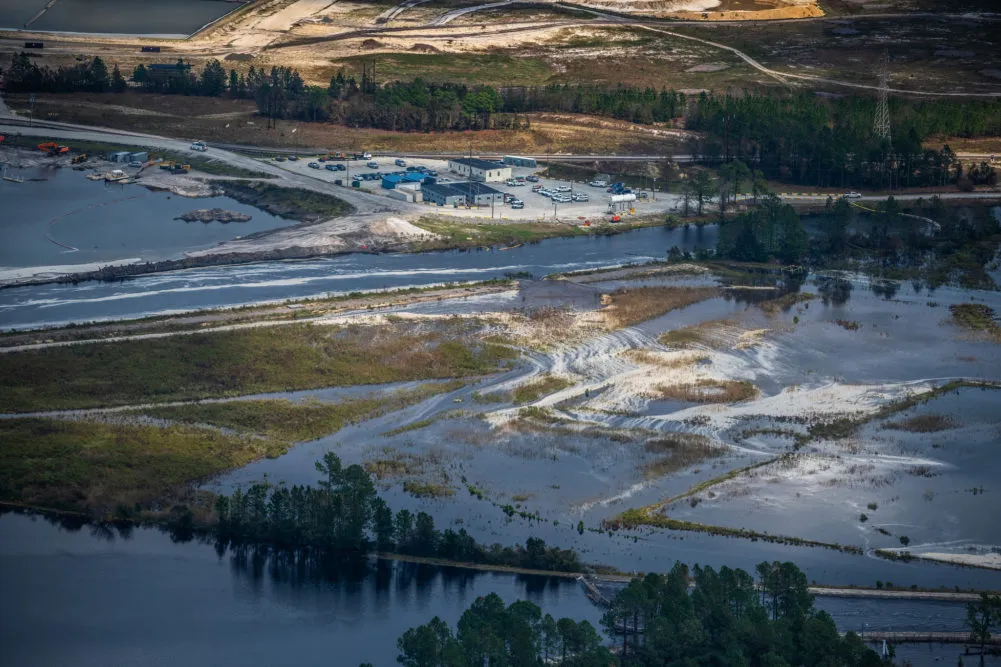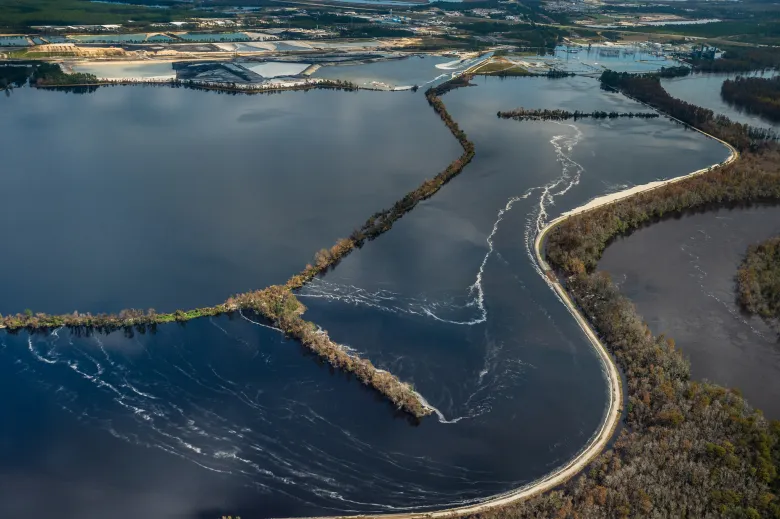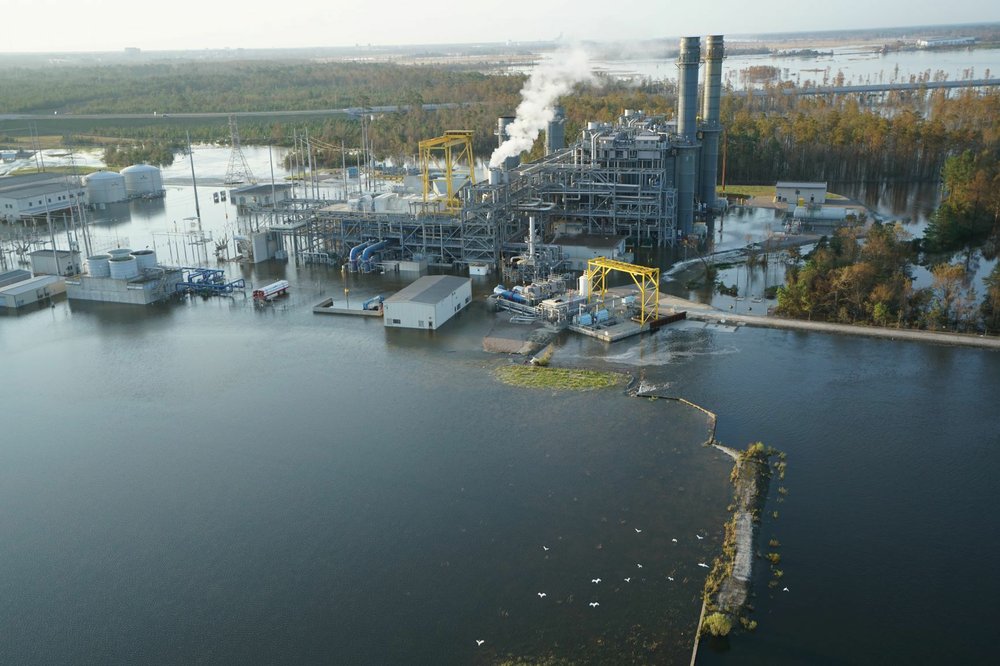
Problems
The coal ash spill on the Dan River
In February 2014, Duke Energy's Eden, N.C., facility spilled 39,000 tons of coal ash into the Dan River, causing irreversible damage to the river ecosystem. The U.S. Environmental Protection Agency (EPA) has since been responsible for overseeing the cleanup. The EPA and Duke Energy signed an administrative order to clean up the site.
How an environmental hotspot formed on the Dan River
On February 2, 2014, a drainage pipe burst in a coal ash storage pond owned by Duke Energy in Eden, North Carolina, releasing 39,000 tons of coal ash into the Dan River. In addition to the coal ash, 27 million gallons of wastewater from the plant flowed into the river. The burst pipe remained uncovered for nearly a week before the coal ash discharge was stopped. The ash was deposited up to 70 miles (110 km) from the spill and contained harmful metals and chemicals. CNN reported that the river had turned to oily silt. The river is the source of drinking water for people in North Carolina and Virginia. Immediate tests showed elevated levels of arsenic and selenium, but state officials declared the river a safe source of drinking water. However, further analyses showed that the ash contained contaminants including arsenic, copper, selenium, iron, zinc, lead, etc. The coal ash immediately endangered animals and fish in or around the river. Six days after the spill, Duke Energy announced that the spill had been stopped and pledged to clean up the coal ash.
Causes of the spill
The cause of the ash spill was a limited structural defect. A storm pipe located near the sediment in the coal ash slurry containment area broke, which caused the spill. Coal ash sludge is formed during the combustion of coal. It is the residual impurities that remain after coal is burned to produce electricity. This material entered the Dan River due to the failure of a 48-inch drainage pipe. The pipe was made of concrete and corrugated metal, and the cause of the failure could not be determined. As a result, 39,000 tons of coal ash and 27 million gallons of water from the ash pit flowed into the Dan River.
Environmental Impacts
The United States Environmental Protection Agency has been collecting data on dissolved pollutant concentrations in the Dan River (from the VA/NC state border to the midpoint between Danville and South Boston) since the coal ash spill. The organization has periodically compared the water/bottom sediment chemistry data obtained with Environmental Risk Screening Levels (ERSLs) to assess aquatic and plant life risks. Coal ash consists of various materials after coal combustion. These include silica, arsenic, boron, cadmium, chromium, copper, lead, mercury, selenium, and zinc. Some of the pollutants measured exceed screening levels, requiring continued monitoring of water chemistry. Coal ash can cover and degrade aquatic animal habitats as well as directly harm certain organisms. Coal ash will never be completely removed from a river. This is because removing the ash is more damaging to some endangered species than the coal ash itself. In addition, the coal ash is already mixed with existing sediment, making it even more difficult to remove. The EPA estimates that about 72 percent of all toxic water in the country comes directly from coal-fired power plants.
Gallery
3Timelines
2019
February 01
Duke has extracted 22 million tons of coal ash from its North Carolina basins over the past five years, though some of that work has been done under threat of private lawsuits filed by the Southern Environmental Law Center. Excavation work at seven additional basins at the Dan River site and the Riverbend Steam Plant in Mount Holly will be completed in the coming months. The utility has also drained several of its pools and is recycling coal ash at some of its facilities.
2014
May 02
On May 2, 2014, the U.S. Environmental Protection Agency (EPA) entered into a $3 million cleanup agreement with Duke Energy Carolinas, LLC (Duke Energy) to address the February 2014 coal ash spill into the Dan River at Eden, N.C. The agreement requires Duke Energy to perform a comprehensive assessment to determine the location of coal ash deposits and to remove deposits along the Dan River at an estimated cost of $1 million. Additionally, Duke Energy will pay EPA $2 million in past and future response costs associated with the spill.
February 02
In February 2014, an Eden, North Carolina facility owned by Duke Energy spilled 39,000 tons of coal ash into the Dan River. The company later pled guilty to criminal negligence in their handling of coal ash at Eden and elsewhere and paid extremely minimal fines of over $5 million, compared to its $24 billion revenue in 2014. The U.S. Environmental Protection Agency (EPA) has since been responsible for overseeing the cleanup of the waste. EPA and Duke Energy signed an administrative order for the site cleanup.

